

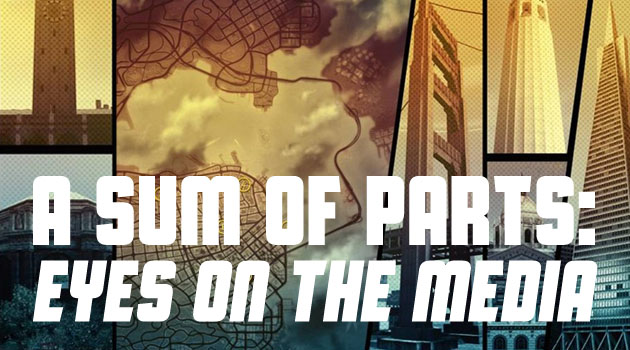
This article is the closest I’ll come this month to giving away Driver: San Francisco spoilers. Well, kind of. Driver SF is a hard game to spoil as it tells the player practically everything up front. You know from the start that Tanner is in a dream. You know the missions he is constructing for himself are influenced by the television news in his hospital room. You know that nothing you do really has any effect on the actual world.
But what it so superbly and subtly leaves until a final “ohhhhhh” moment towards the game’s end is the full significance of the “Eyes on the city” mantra. It’s Driver SF’s own little “Would you kindly”. It permeates so many elements and scenes and conversations of the game as to be utterly ubiquitous. The first time you play, you can easily not even notice the phrase at all before Tanner wakes and it is pointed out to the player, but it is everywhere, as I discovered on a second play. Tanner says it. Jones says it. Jericho says it. Random passengers say it to the drivers Tanner possesses. “Keep your eyes on the city, John.” “We need eyes on the city!” “Eyes on the city, he could be anywhere.” “Watch out, they’ve got eyes on the city.”
Equally discreet is the literal eye on the city when you shift. As you leave Tanner’s body and zoom out to look down on all of San Francisco from above, the faintest outline of an eyeball’s pupil circles the screen. When Tanner shifts, he literally has his eye on the entire city of San Francisco. More than a simple string of words, “Eyes on the city” represents both how Tanner constructs and perceives his own dreamworld.
“Eyes on the city” is, of course, the slogan for KEOC News, the news station constantly echoing into the chamber of Tanner’s hospital room, seeping into his unconscious brain and his active subconscious. Without really knowing it is happening, Tanners takes in what the television set sends out, and his own thoughts and dreamworld are, in part, constructed by them, whether he knows it or not.
Videogames can’t be ‘just games’. They simply can’t.The thing is, we as players know this on some level. We know the missions Tanner is completing are coming from that television set; it’s made explicit at several points. But even then, we are oblivious to just how subtly it is constructing not just Tanner’s mission but the entire world. That is what “Eyes on the city” represents: the way media can alter our perceptions of the world even when we think we are fully aware of them.
We often talk about how videogames should first and foremost be games before they are anything else. This seems to suggest that videogames should exist in a vacuum where they focus on the player pressing buttons and isolate that from any ‘outside’ influences from film or music or narrative or culture in general. It’s this same line of thinking that spits out ‘cinematic’ or ‘linear’ as dirty words because games should be about PLAY above all else, regardless of how pleasurable cinematic or linear play have been shown to be.
The thing is, this viewpoint is incredibly naive. Videogames can’t be ‘just games’. They simply can’t. The other media that surrounds us everyday—be it on television, the internet, in books, on billboards, whatever—is going to seep into the videogames we play—both through the subconscious of the developers while they are piecing it together and through the subconscious of players as we work to interpret what we are seeing and doing.
It’s not as simple as saying that Developer X will see Film Y and then his game will just be Game Y, but Film Y will undoubtedly have some effect on how her game will turn out, along with the whole barrage of other media constantly forcing its way into Developer X’s mind. Tanner’s dreamworld—the game of Driver SF—is as influenced by Tanner’s real experiences of driving as it is by media he has and continues to consume.
The missions Tanner solves being real-world news stories is just one layer of this. The ‘film challenges’ recreate famous movie car chases from the likes of Blues Brothers and Dukes of Hazard. Since the very first Driver on Playstation, the series has been about trying to capture the feel of a Hollywood car chase. The developers of that first game clearly had a love for that media and wanted to bring that to videogames. In Driver SF, this is still the case, but now that desire of the developers itself finds its own way into the game. Tanner, himself a keen driver, clearly loves Hollywood car chases and has a deep-rooted desire to drive like that. In his dreamworld, he finally has the chance to do so.
Then there are all the bombs. So many bombs. Which exist probably both because Tanner is so obsessed with Jericho’s bomb plot and because ever since 9-11, culture creators (and indeed all of us) can’t help but fixate on the possibility of our seemingly safe cities suddenly exploding. We might not be frozen with paranoia, but the extremist bomber is a haunted zeitgeist of our time, and it inevitably finds its way into the culture we make and consume.
Works influence works; media influence media. It’s not so much that the media we consume skews how we see the world, but more so that the media we consume constructs our own subjective world—both in ways we realise and ways we don’t realise. The world of Driver SF is constructed by outside media—both through the developers and through Tanner himself—in both blatant and subtle ways. I knew Tanner’s world was influenced by the news channel broadly, but I had no idea that influence was so pervasive and ubiquitous as to affect individual snippets of dialog, to affect the very lens through which I looked down on the city.
Lots of people don’t like the idea of media being ‘consumed’ as they think it just sounds too passive, like the media consumer just lies down (not unlike a coma patient, actually) and uncritically lets the media seep into them. Indeed, how we engage with different media (videogames included) is perhaps more complicated than the term ‘consume’ can do justice. But regardless, media truly does get inside of us; it gets under our skin. Tanner has his eyes on the city, and we look out from that eye down on the gameworld. But what’s on this side of that eye that is looking outward? What has seeped into us that is altering what we see out there?
Previous articles:
A Sum of Parts: Watching You Play
A Sum of Parts: Less Efficient Means
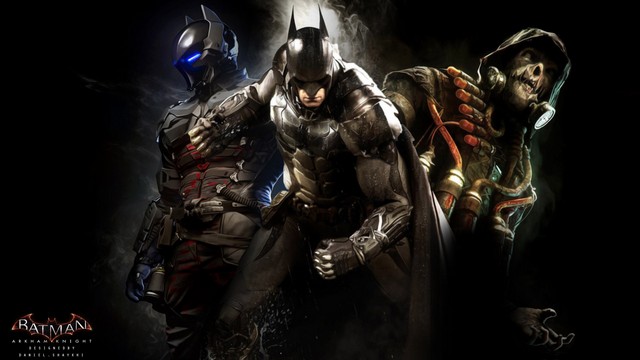
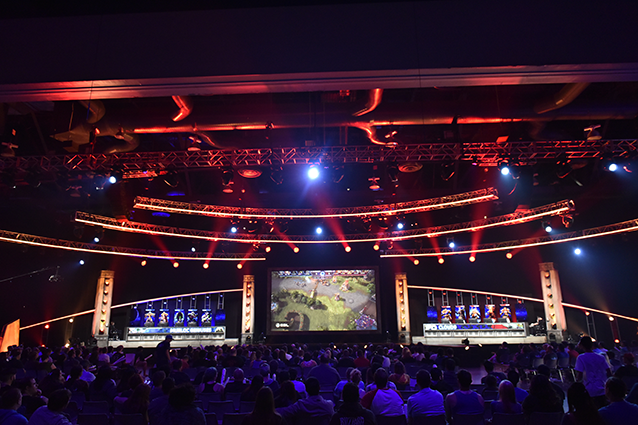

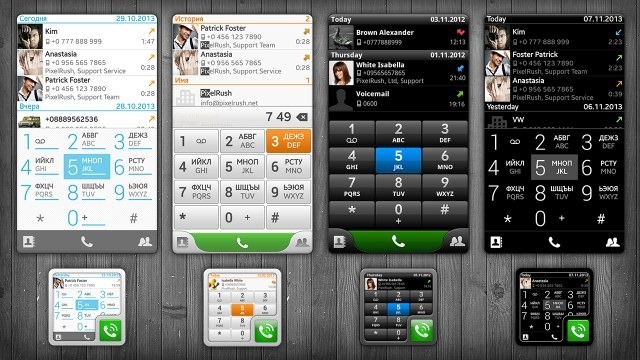
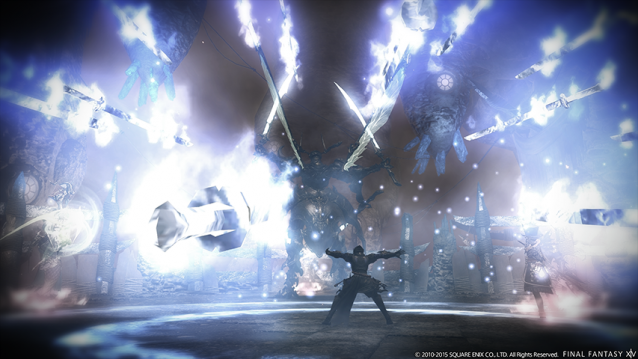 The Road to Final Fantasy XIV: Heavensward
The Road to Final Fantasy XIV: Heavensward How to Beat Ludwig, The Accursed in Bloodborne: The Old Hunters
How to Beat Ludwig, The Accursed in Bloodborne: The Old Hunters Save 15% on Everything in Our 24-Hour Black Friday Blowout
Save 15% on Everything in Our 24-Hour Black Friday Blowout Heroes of the Storm: Tomb of the Spider Queen Tips and Strategies
Heroes of the Storm: Tomb of the Spider Queen Tips and Strategies Activision-Blizzard Announces eSports Division
Activision-Blizzard Announces eSports Division